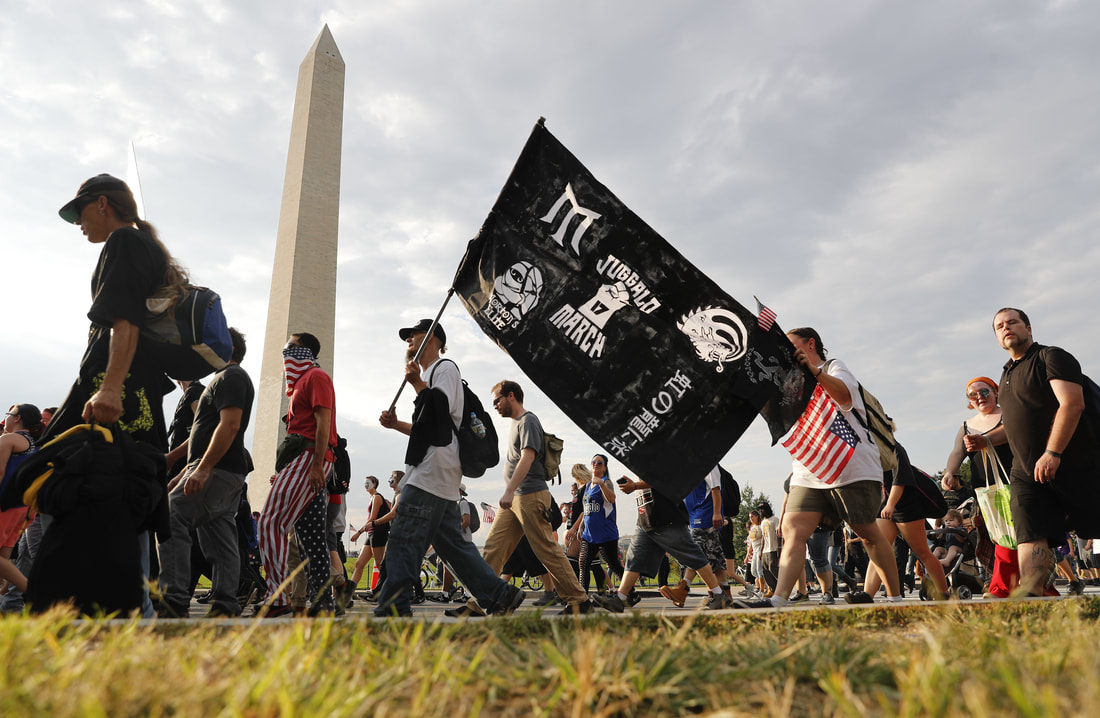|
One of the downsides of biased, sensationalized news is it can become the norm, setting expectations to produce and consume dramatized content. The coverage we analyzed of Saturday’s protests in Washington elucidates this point. For contrast, here’s what reportedly happened in a nutshell: Several groups representing different ideologies protested their cause(s) around the Mall in Washington, while other previously scheduled events also took place. There was some face paint, “Make America Great Again” hats and “a $3 piece of multigrain toast” involved, but all the rallies took place in a civil fashion and then demonstrators went about their business. Outside of what was planned, nothing happened. But that’s not how these four sources reported it — here’s a look at each of their angles. 1. The Washington Post: bring in the big, dramatic guns
The day seemed almost designed to test Americans’ ability to disagree peaceably … Looming large over the day was the specter of Charlottesville, where a white nationalist rally just over a month ago turned into a deadly riot … But the protesters in Washington, unlike those in Charlottesville, did not show up armed with shields, clubs and guns, and even implored one another at times to avoid brawling.Was the Post expecting the protests to turn violent? Because the parallels to Charlottesville (a total of seven in the article) sure makes it look as if it was. 2. Fox News: what makes “normal,” “extraordinary” The National Mall in Washington, D.C., hosted protesters from competing demonstrations with differing agendas on Saturday, highlighting the stark political divisions in the United States.Aren’t differing views (even what might be considered “competing” political ideologies) a normal part of a healthy democracy? Granted, the causes represented on Saturday were different and they may be conflicting in some ways, but that’s not necessarily negative — they could allow for more ideas and consideration. Here, Fox turns what’s normal into something more sensational by spinning “different” into “stark divisions.” 3. The Associated Press: the Trump rally was a disappointment Organizers had dubbed it the Mother of All Rallies and hoped to bring out thousands to pack the National Mall on Saturday in support of President Donald Trump. In the end, hundreds of flag-waving demonstrators did their best to make some noise in support of the president, who had skipped town for the weekend.In its headline and lead sentence, AP emphasized the Trump rally was smaller than its organizers expected, and suggested those protesters were let down by the president, who chose his resort in New Jersey instead. This is AP’s subjective evaluation of the turnout, rather than just data. 4. The New York Times: drama in the mix But Washingtonians had nothing to fear. In fact, they barely blinked. It was just another day in the capital’s summer of protest … It seemed a potentially combustible mix, but clashes were limited to a few harsh words exchanged near some porta-potties, and the city went about its usual business …“This is the new normal,” said Helen Brosnan, a Washington resident. The Times imports drama by bringing fear into the picture, but then suggests and emphasizes that everything was normal. You might come away thinking this “potentially combustible mix” of protesters have truly become the norm in Washington, or you might think maybe there is something to fear… otherwise, why suggest there isn’t? Although each outlet spun the news a different way, they all departed from the data of what actually happened at the event, adding distortion to make it more interesting or entertaining. And don’t get us wrong — entertainment is great, but there are downsides when it’s woven into the news. For instance, it blurs the line between fact and fiction, which affects our ability to discern between the two in other contexts. It also trains our “taste” for the news much like excess salt or sweeteners would train our taste buds. The more sensationalism we consume, the more we crave it, and the less appealing fact-based reporting becomes. This may not seem like a big deal, but think about its effect a few generations from now. Written by Leah Mottishaw Edited by Ivy Nevares and Jens Erik Gould Visit the original story with ratings on Knife Media’s website Follow us on Twitter @theknifemedia Comments are closed.
|
Jens Erik GouldJens is a political, business and entertainment writer and editor who has reported from a dozen countries for media outlets including The New York Times, National Public Radio and Bloomberg News Archives
February 2018
Categories
All
|

 RSS Feed
RSS Feed